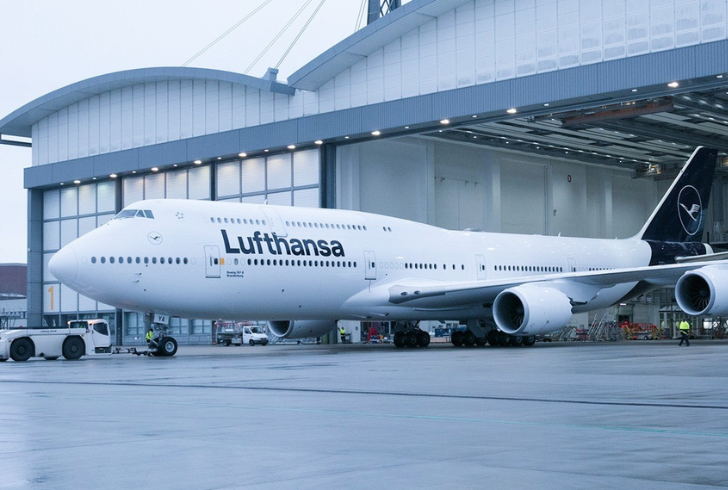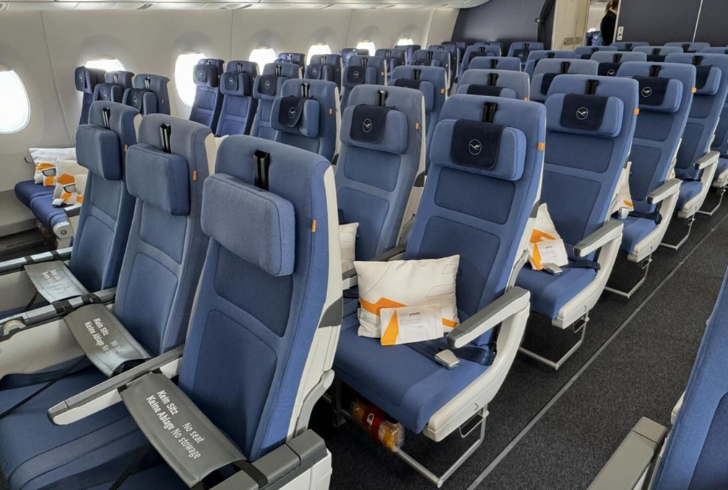Lufthansa’s innovative approach to aircraft balance has captured the industry’s attention. To make room for a lavish new first-class cabin, the airline has introduced lead weights to some of its jets. This strategic move marks a departure from traditional practices, demonstrating a commitment to passenger comfort and luxury, even at the cost of increased aircraft weight. The introduction of Lufthansa's lead weight jets showcases a fascinating shift in airline operations, where balance and comfort are prioritized over traditional weight-saving measures.
Why Add Lead Weights to Jets?
Typically, airlines focus on reducing aircraft weight to cut fuel costs and minimize environmental impact. Lufthansa's decision to add lead weights to their jets, specifically the Airbus A330-300 models, is a notable exception. This adjustment comes as part of a strategy to enhance the first-class experience by introducing lie-flat beds and other premium features.
The Mechanics Behind the Balance

Instagram | lufthansaviews | To keep the aircraft balanced and ensure a smooth flight, the weights are positioned at the tail.
The addition of lead weights, also referred to as "balancing plates," is designed to correct a weight imbalance. This imbalance arises from the new first-class configuration, which includes heavy lie-down beds for up to four passengers. To maintain the aircraft's proper balance and ensure a smooth flight, these weights are strategically placed at the tail of the plane.
Key Details of the Adjustment:
- Aircraft Affected: Airbus A330-300 jets
- Routes: Flights to the US East Coast, Canada, and the Middle East
- Purpose: To balance the added weight of new first-class features
Comfort vs. Environmental Impact
While adding weight to aircraft might seem counterintuitive, Lufthansa is committed to providing an exceptional first-class experience. However, this decision also brings increased fuel consumption and higher carbon emissions. For instance, a first-class passenger traveling round-trip from Zurich to New York generates approximately 14 tons of CO2, a stark contrast to the lower emissions of economy class passengers.
How Lufthansa's Lead Weight Jets Affects Travelers
For passengers in first class, the new setup means a more comfortable and restful flight. The lie-flat beds and additional amenities are designed to offer a premium experience, making long-haul flights more enjoyable. On the other hand, travelers in economy class benefit from lighter, more streamlined seats that help improve overall fuel efficiency.
The Broader Implications for the Aviation Industry

Instagram | samchui | Lufthansa’s use of lead weights to balance aircraft underscores its commitment to enhancing passenger comfort.
Lufthansa's decision to use lead weights to balance aircraft highlights a broader trend in the industry: airlines are increasingly focusing on optimizing passenger comfort, even if it involves unconventional methods. This move underscores the balancing act airlines face between providing luxury and managing environmental responsibilities.
Key Points to Consider:
- Balancing Luxury and Efficiency: While comfort is a priority, it must be weighed against environmental impacts.
- Innovative Solutions: The use of lead weights is an example of creative problem-solving in aviation.
- Passenger Experience: Enhanced first-class amenities reflect a growing emphasis on premium services.
What’s Next for Lufthansa?
Lufthansa's lead weight jets exemplify a novel approach to enhancing passenger experiences. By adding these weights to their aircraft, Lufthansa aims to provide first-class passengers with a more comfortable and luxurious flight.
While this strategy may increase fuel consumption and emissions, it showcases the airline's dedication to delivering exceptional service. As the aviation industry continues to evolve, innovative solutions like Lufthansa's will likely shape the future of air travel.

